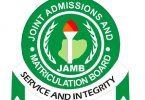Jamb Syllabus for mathematics for 2024 is now available, candidates preparing for JAMB 2022 are advised to download the latest Jamb Syllabus 2024 in other to get prepared ahead of the forthcoming UTME Examination.
The Jamb Syllabus for Mathematics 2024 will help candidates pinpoint their reading or studies towards better topics and courses that will be set for the 2024 UTME examination.
What is Jamb Syllabus?
Simply means a summary of topics that jamb have converted during an academic course which is expected to be asked during an Examination day. Challenges students face is the inability of them getting the right tools or materials to study, there is a way to go about reading your syllabus. Your JAMB mathematics syllabus is not meant for you to just know the topics you should stay focus by studying and solving.
Meanwhile, Nkedugist wants to let you know that the importance of JAMB Mathematics Syllabus cannot be overemphasized. The candidate who took it upon them is the once coming out with good scores and grades for their exams
The aim of this 2024 JAMB Mathematics Syllabus for Unified Tertiary Matriculation Examination (UTME), is to prepare the candidates for the Board’s examination. It is designed to test the achievement of the course objectives, which are to:
- Speed calculation and manipulative skills;
- comprehension of questions set up.
- logical and formal reasoning skills;
- Mathematical concepts to answer questions of different Topics.
Jamb Mathematics syllabus is Categories into five Segment which are:
I. Number and Numeration.
II. Algebra
III. Geometry/Trigonometry.
IV. Calculus
V. Statistics
Check Also Related Article:
- JAMB SUBJECT COMBINATION COURSES FOR ALL SCIENCES
- How to Confirm Waec Result if uploaded in Jamb Portal
- Is it true that Jamb will be using National Identity Management Number(NIM) in 2020?
Essential JAMB Syllabus For Mathematics 2024/2025
SECTION I: NUMBER AND NUMERATION
1. Number bases:
Topics:
(a) operations in different number bases from 2 to 10;
(b) conversion from one base to another including fractional parts.
Objectives:
Candidates should be able to:
i. perform four basic operations (x,+,-,÷)
ii. convert one base to another.
2. Fractions, Decimals, Approximations, and Percentages:
Topics:
(a) fractions and decimals;
(b) significant figures;
(c) decimal places;
(d) percentage errors;
(e) simple interest;
(f) profit and loss percent;
(g) ratio, proportion, and rate;
(h) shares and value-added tax (VAT).
Objectives:
Candidates should be able to:
i. perform basic operations (x,+,-,÷) on fractions and decimals;
ii. express to specified number of significant figures and decimal places;
iii. calculate simple interest, profit and loss percent; ratio proportion and rate;
iv. Solve problems involving share and VAT.
3. Indices, Logarithms, and Surds:
Topics:
(a) laws of indices;
(b) standard form;
(c) laws of logarithm;
(d) the logarithm of any positive number to a given base;
(e) change of bases in logarithm and application;
(f) relationship between indices and logarithm;
(g) surds.
Objectives:
Candidates should be able to:
i. apply the laws of indices in calculation;
ii. establish the relationship between indices and logarithms in solving problems;
iii. solve problems in different bases in logarithms;
iv. simplify and rationalize surds;
v. perform basic operations on surds.
4. Sets:
Topics:
(a) types of sets
(b) algebra of sets
(c) Venn diagrams and their applications.
Objectives:
Candidates should be able to:
i. identify types of sets, i.e empty, universal, complements, subsets, finite, infinite and disjoint sets;
ii. solve problems involving cardinality of sets;
iii. solve set problems using symbol;
iv. use Venn diagrams to solve problems involving not more than 3 sets.
SECTION II: ALGEBRA.
1. Polynomials:
Topics:
(a) change of subject of a formula
(b) factor and remainder theorems
(c) factorization of polynomials of degree not exceeding 3.
(d) multiplication and division of polynomials
(e) roots of polynomials not exceeding degree 3
(f) simultaneous equations including one linear one quadratic;
(g) graphs of polynomials of degree not greater than 3.
Objectives:
Candidates should be able to:
i. find the subject of the formula of a given equation;
ii. apply factor and remainder theorem to factorize a given expression;
iii. multiply and divide polynomials of degree not more than 3;
iv. factorize by regrouping the difference of two squares, perfect squares, and cubic expressions; etc.
v. solve simultaneous equations – one linear, one quadratic;
vi. interpret graphs of polynomials including applications to maximum and minimum values.
2. Variation:
Topics:
(a) direct
(b) inverse
(c) joint
(d) partial
(e) percentage increase and decrease.
Objectives:
Candidates should be able to:
i. solve problems involving direct, inverse, joint and partial variations;
ii. solve problems on percentage increase and decrease in variation.
3. Inequalities:
Topics:
(a) analytical and graphical solutions of linear inequalities;
(b) quadratic inequalities with integral roots only.
Objective:
Candidates should be able to:
i. solve problems on linear and quadratic inequalities;
ii. interpret graphs of inequalities.
4. Progression:
Topics:
(a) nth term of a progression
(b) sum of A. P. and G. P.
Objectives:
Candidates should be able to:
i. determine the nth term of a progression;
ii. compute the sum of A. P. and G.P;
iii. sum to infinity of a given G.P.
5. Binary Operations:
Topics:
(a) properties of closure, commutativity, associativity, and distributivity;
(b) identity and inverse elements (simple cases only).
Objectives:
Candidates should be able to:
i. solve problems involving closure, commutativity, associativity, and distributivity;
ii. solve problems involving identity and inverse elements.
6. Matrices and Determinants:
Topics:
(a) algebra of matrices not exceeding 3 x 3;
(b) determinants of matrices not exceeding 3 x 3;
(c) inverses of 2 x 2 matrices [excluding quadratic and higher degree equations].
Objectives:
Candidates should be able to:
i. perform basic operations (x,+,-,÷) on matrices;
ii. calculate determinants;
iii. compute inverses of 2 x 2 matrices.
SECTION III: GEOMETRY AND TRIGONOMETRY
1. Euclidean Geometry:
Topics:
(a) Properties of angles and lines
(b) Polygons: triangles, quadrilaterals, and general polygons;
(c) Circles: angle properties, cyclic quadrilaterals, and intersecting chords;
(d) construction.
Objectives:
Candidates should be able to:
i. identify various types of lines and angles;
ii. solve problems involving polygons;
iii. calculate angles using circle theorems;
iv. identify construction procedures of special angles, e.g. 30°, 45°, 60°, 75°, 90°, etc.
2. Mensuration:
Topics:
(a) lengths and areas of plane geometrical figures;
(b) lengths of arcs and chords of a circle;
(c) Perimeters and areas of sectors and segments of circles;
(d) surface areas and volumes of simple solids and composite figures;
(e) the earth as a sphere:- longitudes and latitudes.
Objectives:
Candidates should be able to:
i. calculate the perimeters and areas of triangles, quadrilaterals, circles and composite figures;
ii. find the length of an arc, a chord, perimeters, and areas of sectors and segments of circles;
iii. calculate total surface areas and volumes of cuboids, cylinders. cones, pyramids, prisms, spheres and composite figures;
iv. determine the distance between two points on the earth’s surface.
3. Loci:
Topic:
locus in 2 dimensions based on geometric principles relating to lines and curves.
Objectives:
Candidates should be able to:
identify and interpret loci relating to parallel lines, perpendicular bisectors, angle bisectors and circles.
4. Coordinate Geometry:
Topics:
(a) midpoint and gradient of a line segment;
(b) distance between two points;
(c) parallel and perpendicular lines;
(d) equations of straight lines.
Objectives:
Candidates should be able to:
i. determine the midpoint and gradient of a line segment;
ii. find the distance between two points;
iii. identify conditions for parallelism and perpendicularity;
iv. find the equation of a line in the two-point form, point-slope form, slope-intercept form, and the general form.
5.Trigonometry:
Topics:
(a) trigonometrical ratios of angels;
(b) angles of elevation and depression;
(c) bearings;
(d) areas and solutions of a triangle;
(e) graphs of sine and cosine;
(f) sine and cosine formulae.
Objectives:
Candidates should be able to:
i. calculate the sine, cosine, and tangent of angles between – 360° ≤ θ ≤ 360°;
ii. apply these special angles, e.g. 30°, 45°, 60°, 75°, 90°, 105°, 135° to solve simple problems in trigonometry;
iii. solve problems involving angles of elevation and depression;
iv. solve problems involving bearings;
v. apply trigonometric formulae to find areas of triangles;
vi. solve problems involving sine and cosine graphs.
SECTION IV: CALCULUS

Jamb Mathematics syllabus for 2024
I. Differentiation:
Topics:
(a) limit of a function
(b) differentiation of explicit algebraic and simple trigonometrical functions-sine, cosine, and tangent.
Objectives:
Candidates should be able to:
i. find the limit of a function
ii. differentiate explicit algebraic and simple trigonometrical functions.
2. Application of differentiation:
Topics:
(a) rate of change;
(b) maxima and minima.
Objective:
Candidates should be able to:
solve problems involving applications of the rate of change, maxima, and minima.
3. Integration:
Topics:
(a) integration of explicit algebraic and simple trigonometrical functions;
(b) the area under the curve.
Objectives:
Candidates should be able to:
i. solve problems of integration involving algebraic and simple trigonometric functions;
ii. calculate the area under the curve (simple cases only).
SECTION V: STATISTICS
1. Representation of data:
Topics:
(a) frequency distribution;
(b) histogram, bar chart and pie chart.
Objectives:
Candidates should be able to:
i. identify and interpret frequency distribution tables;
ii. interpret information on the histogram, bar chat, and pie chart
2. Measures of Location:
Topics:
(a) mean, mode and median of ungrouped and grouped data – (simple cases only);
(b) cumulative frequency.
Objectives:
Candidates should be able to:
i. calculate the mean, mode, and median of ungrouped and grouped data (simple cases only);
ii. use ogive to find the median, quartiles, and percentiles.
3. Measures of Dispersion:
Topic:
range, mean deviation, variance, and standard deviation.
Objective:
Candidates should be able to:
calculate the range, mean deviation, variance and standard deviation of ungrouped and grouped data.
4. Permutation and Combination:
Topics:
(a) Linear and circular arrangements;
(b) Arrangements involving repeated objects.
Objective:
Candidates should be able to:
solve simple problems involving permutation and combination.
5. Probability:
Topics
(a) experimental probability (tossing of a coin, throwing of dice, etc);
(b) Addition and multiplication of probabilities (mutual and independent cases).
Objective:
Candidates should be able to:
solve simple problems in probability (including addition and multiplication).
JAMB Fundamentals of Mathematics Textbooks for Mathematics
- Further Mathematics, Onitsha: Africana – FIRST Publishers Egbe. E et al (2000)
- Algebra and Calculus for Schools and Colleges: LINCEL Publishers.Adelodun A Ibude, S. O. et al (2003)
- Distinction in Mathematics: Comprehensive Revision Text, (3rd Edition) Ado -Ekiti: FNPL. (2000)
- Basic Mathematics for Senior Secondary Schools and Remedial Students in Higher/ institutions, Lagos: Kenny Moore. Anyebe, J. A. B (1998)
- New General Mathematics for West Africa SSS 1 to 3, Lagos: Longman. Channon, J. B. Smith, A. M (2001)
- New School Mathematics for Senior Secondary Schools, Onitsha: Africana – FIRST Publishers.David -Osuagwu, M. et al (2000)
- Further Mathematics Project Books 1 to 3, Ibadan: NPS Educational Tuttuh – Adegun M. R. et al (1997) Wisdomline Pass at Once JAMB.
- Mathematics One Time Jamb Success
Summary
Jamb syllabus for mathematics is a guideline necessary material for every candidate who wants to succeed and come out will good grades after studying. At your convenience time, relax and take a breath, the most important thing is to understand the Jamb Mathematics Syllabus 2020 wish you success in your exams.
We’re wishing all students the very best as you study, and don’t forget to share this information with your friends on facebook, twitter, and Google+, using the share buttons below. Thanks for reading.






